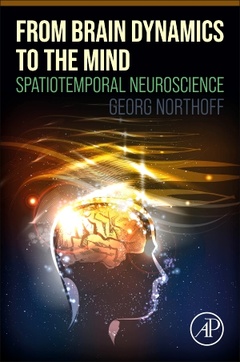Description
From Brain Dynamics to the Mind
Spatiotemporal Neuroscience
Author: Northoff Georg
Language: English
Subjects for From Brain Dynamics to the Mind:
690 p. · 15x22.8 cm · Paperback
Description
/li>Contents
/li>Biography
/li>Comment
/li>
From Brain Dynamics to the Mind: Spatiotemporal Neuroscience explores how the self and consciousness is related to neural events. Sections in the book cover existing models used to describe the mind/brain problem, recent research on brain mechanisms and processes and what they tell us about the self, consciousness and psychiatric disorders. The book presents a spatiotemporal approach to understanding the brain and the implications for artificial intelligence, novel therapies for psychiatric disorders, and for ethical, societal and philosophical issues.
Pulling concepts from neuroscience, psychology and philosophy, the book presents a modern and complete look at what we know, what we can surmise, and what we may never know about the distinction between brain and mind.
PART I Brain dynamics Section 1 Variability of the brain 1. The fluctuating brain-essentials of neural variability 2. Neural variability in rest and task states 3. Neural variability shapes perception and cognition 4. Neurodynamic mechanisms of neural variability Section 2 Scale-freeness of the brain 5. From broccoli to the brain - Scale-free activity 6. From scale-free activity to temporo-spatial nestedness 7. Scale-free dynamic shapes perception and cognition 8. Scale-free activity – bridge between environment and brain Section 3 Timescales of the brain 9. The brain’s inner time – intrinsic neural timescales 10. Intrinsic neural timescales mediate input processing 11. From Chronos and Kairos to the brain’s temporal receptive windows 12. Lessons from geology – from the human brain to artificial agents Section 4 Synchrony of the brain 13. Synchrony in nature and brain 14. Entrainment – How the brain synchronizes with its environment 15. Global synchronization in the brain 16. Neural synchronization in fMRI and EEG/MEG - a methodological guide Part II Dynamic layer model of brain Section 1 Dynamic layers and the brain 17. Layers of the brain - An introduction 18. Background and foreground layers I: Scale-free stability versus oscillatory flexibility 19. Background and foreground layers II - nonlinear and asymmetric relationship Section 2 From dynamic layers to cognition 20. Baseline model of cognition I: Distinction from dual model of cognition 21. Baseline model of cognition II: Spatiotemporal shaping of cognition and input processing 22. Dynamic capacities and cognition Section 3 Dynamic layer model of brain vs other models of brain 23. Cognitive model and predictive coding 24. Intrinsic and inside-out models of brain 25. Brain and world - converging free energy principle and dynamic layer theory of brain Part III Mind dynamics Section 1 The self 26. The self and its intrinsic topography 27. The dynamic of self and its semantics 28. The self - psychological baseline or default 29. From icebergs to the self – point of view Section 2 Meditation 30. Topographic reorganization model of meditation 31. Topographic reorganization of the self 32. Dynamic reorganization of the brain Section 3 Dreams 33. From Salvador Dali to dreams - topographic reorganization model of dreams 34. From falling keys to dreams - Dynamic reorganization Section 4 Thoughts 35. How dynamics shape our thoughts 36. Baseline model of thought Section 5 Consciousness 37. The jungle of consciousness – current neuroscientific theories 38. Order in the jungle of consciousness – convergence of theories 39. Temporo-spatial theory of consciousness I – form and level/state 40. Temporo-spatial theory of consciousness (TTC) II: Contents 41. From brain to consciousness - “common currency hypothesis Section 6 Autism 42. Dynamic shapes perception and behavior in autism 43. Hierarchical model of autistic self
- Reviews models of understanding the mind/brain problem
- Identifies neural processes involved in consciousness, sense of self and brain function
- Includes concepts and research from neuroscience, psychology, cognitive science and philosophy
- Discusses implications for AI, novel therapies for psychiatric disorders and issues of ethics
- Suggests experimental designs and data analyses for future research on the mind/brain issue




